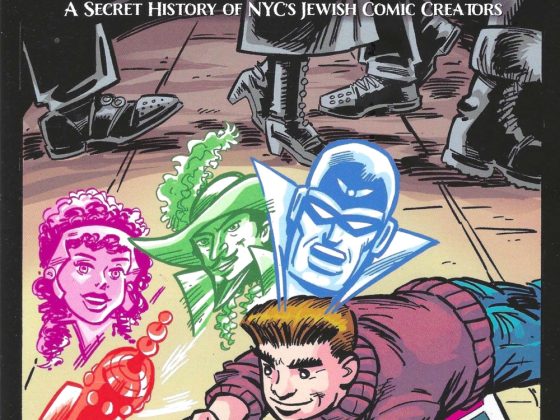Driving recently through the wilds of Connecticut saw the sign for Bridgeport, and flashed on 40 Logan Street, an address that in a certain era was a daily part of the life of most comic professionals. Was that what subconsciously led to Wolverine’s name? Who knows, but he was a colorful character…and that was the address of Chemical Color, where virtually every comic book was color separated for many years (not sure if Charlton did their own seps as part of their very vertically integrated operation).
The women who opaqued films to create the screens that were photographed to create the plates were anonymous to the industry, much less to fandom. Seeing the discussion of whether ‘flatters’ who assist in the current color process should be credited along with the colorists who engage them as assistants brings them to mind. Their work was, in a way, analogous to the flatters: covering designated areas with a dark red opaque while reading and interpreting the color guides sent up by the publishing companies. It was a s sort of paint by numbers task, with the main rule being stay inside the lines.
It also brings to mind how linked the comics publishers were in the early 1970s when I arrived. In the morning, Eddie would make the rounds–I apologize for having long forgotten his name, but I can still recall his face and grazed voice clearly. He’d drive down from Bridgeport with the latest proofs: color transparencies for the covers and sometimes first pages, black and white for the interiors; dropping them off in turn at DC, Marvel, Archie and Harvey (not necessarily in that order). Sometimes he’d bring an extra goody–pages from Curt Swan, or another artist who lived fairly near the plant and wanted to save themself a trip to the city. Of course, it had to be an artist who was confident that the editors wouldn’t ask for corrections or adjustments to be made. In the afternoon, Eddie would return, and pick up artwork for issues or covers to be shot, and their color guides. And sometimes, a package back for Curt with a script and a check.
In my time, we had four people still on the staff at DC who had done color seps in the Golden Age of comics: Sol Harrison, who would go on to head production and then become President of the company before retiring; Jack Adler, a true master of color and its technology, who would color DC’s covers for a generation and then follow Sol as the head of production; Midge Bregman, who most of the staff knew as Sol’s assistant or later mine or finally as our office manager or newsstand sales manger, with her separator days a secret identity; and Lois Barker, quietly working in the files that stored the film negatives, either opaquing them for foreign publishers to drop in other language to the speech balloons, or removing the opaque when we wanted to print them in America. Lois might have been the first person of color to work on the DC staff.
There are so many questions I wish I had thought to ask these people. Sol and Jack told a few tales, but only a tiny fragment of the experiences of their lives. The other folks I mentioned just did was needed, day after day, and rarely reminisced or revealed. If only my Time Machine worked, I’d tell myself to be more curious…

IIRC, Wolverine was named Logan because he was very short and Mt. Logan is the tallest mountain in Canada.
These are the behind the scenes stories that I love — how the comics were made, not just created, but also as physical objects.